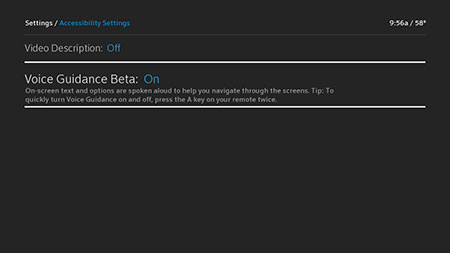New voice-enabled technology from Comcast, which provides people who are blind or visually impaired with easier access to TV offerings, will be available to all Xfinity X1 customers in Michigan by the end of the year.
“Television is universally loved, and we want everyone to be able to enjoy it,” says Brian Roberts, chairman and CEO of Comcast, which has a corporate office in Plymouth. “The talking guide feature will enable all of our customers to experience the X1 (entertainment operating system) in a new way, and give our blind and visually impaired customers the freedom to independently explore and navigate thousands of shows and movies.”
By activating the talking guide on their existing set top box, X1 customers can listen to a voice that reads aloud selections such as program titles, network names, and time slots as well as DVR and On Demand settings. The guide describes what’s on the screen and includes details such as individual program descriptions and ratings.
Future versions will include functionality within the platform’s search function and additional personalization settings, such as rate of speech.
“The talking guide is as much about usability as it is about accessibility,” says Tom Wlodkowski, Comcast’s vice president of audience. “We think about accessibility from the design of a product all the way through production and this feature is the result of years of work by our team including customer research, focus groups, and industry partnerships. For people like me who are blind, this new interface opens up a whole new world of options for watching TV.”
In addition to voice guidance and one-touch access to closed captioning, Comcast offers an online help and support resource for Xfinity customers looking for information about accessibility-related topics. The webpage includes an overview of accessibility products and services, support for third-party assistive devices, information related to Braille or large-print bills, and the ability to connect with accessibility support specialists.
The company also has a service center specifically dedicated to customers with disabilities. A team of specially trained care agents at the Pensacola, Fla.-based Accessibility Center of Excellence handles about 10,000 calls each month.
Next year, Comcast plans to partner with service organizations and nonprofits to create awareness in the disability community of voice guidance and other accessibility features that offer a more inclusive entertainment experience.






